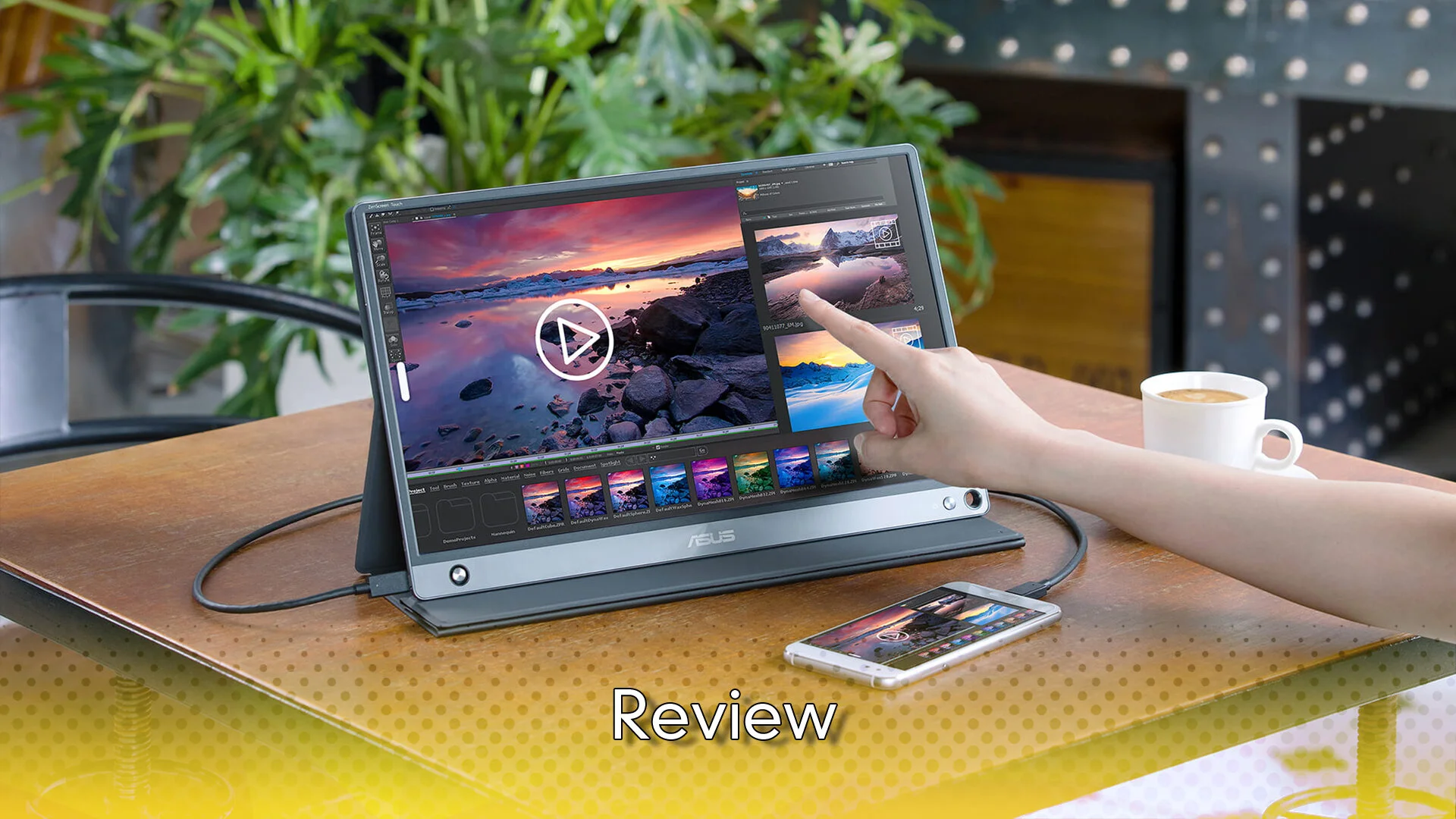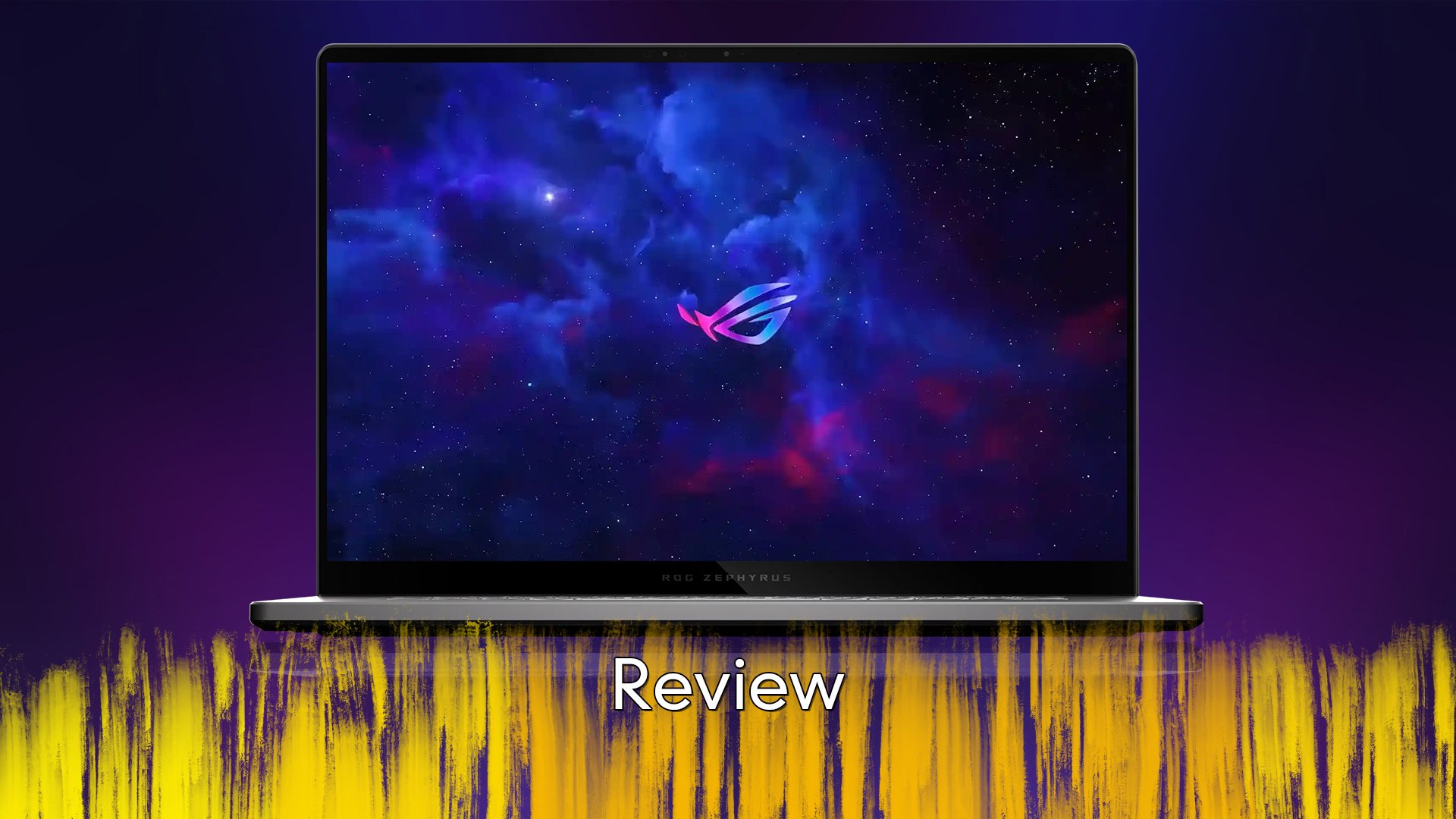ASUS Zenbook UX534 - Review

For a while now, ASUS have been delivering some powerhouse laptops, complete with a special feature or two that is a little bonkers, but each release seems to improve on the last, but is the UX534 a worthy addition to the line or have things peaked?
As a laptop is built to be sturdy it needs a solid shell and once again, they have gone with a solid metal casing for both external sides of the device and coloured in the exquisite Royal Blue colour that they have. As the lid/screen has the solid metal casing, there is very little flex in it, which is always a plus factor when dealing with a portable device, the lower portion, which contains the keyboard and such, is mostly perfect, but a little more on that in a bit. The front of the case contains the impressive ScreenPad Plus 2, but the surrounding space is solid metal, which has a really nice feel when resting on it, the downside to all this metal though is that the case collects fingerprints like nothing else, so if you want it to look the best, you will need to clean it a lot. The inputs on offer are the basics, there is nothing really special here, on one side you have a USB 3.1 port and 3.5mm audio connector, the other side has the rest. Here you have a SD card reader, USB-C, a full-size HDMI port and of course the power connector, but on top of that, there is also a USB 3.1 port, which is actually a second generation, unlike the left sides gen 1, so the speeds are a little better. While there is a nice selection of ports, I would have preferred if they were more spaced out, the right side can easily feel cluttered, if you are using two, add in a third and forget about it.
The other issue from the case is that the heat that the system generates is pushed right onto the screen, as the exhaust for it is right below it, while the machine does run cool, except for when attempting heavy gaming, there is still considerable heat pushed onto the display, not a massive impact to your use of the device, but definitely something to be aware of. Speaking of the display, it is actually very well put together, there is a glass sheet that covers it, which I suspect was done in an attempt tot mitigate any potential damage from the exhaust, the brightness and colours are both excellent, which makes it easy to watch a movie, or play a game, at least indoors. The response time on the gaming side though is a little slow, so while you can game on it, you will notice some artefacts on the screen, thanks to that slower response time. Taking the laptop out into the sun is going to give you a bad time with the display, the white balance seems higher, which means any light hitting it will blow out whatever you are seeing.
One area where I really had no issues is with the performance, the device took almost everything I threw at it, with a proverbially smile on its face, gaming being the roadblock of course. I am a big user of photoshop, lack of talent notwithstanding, but the laptop was able to run it without issue, something that I have problems with on my Surface Laptop 1. Even dealing with larger assets seemed to matter little to the blue laptop and while there were times when things did run slow, that was when I was deliberately making it do so, by opening up a lot of things. The CPU is up to the task for almost everything, but as I said there are some limits and they honestly come down to gaming, while you can game with the laptop, I would suggest not. While the Integrated Intel UHD Graphics 620 does a solid job, at the very basics, anything more than that struggles, but then again if you are buying a laptop for gaming, ASUS have an entire range for you to look at. There is a more powerful model that comes with a proper GTX card, but it is only a 1650, which is more capable, but not to the level some of the ROG machines are.
There is an entire feature I haven’t really touched upon yet and that is the ScreenPad, the space where the mousepad is and for a good reason, I honestly never used it. I tried to use of course, part of the review, but when I was just working on something, my attention was on the main screen and if I needed to use the ScreenPad, it was just as mouse. Please don’t misunderstand, the ScreenPad does offer an impressive range of options, if you have software that makes use of it, but for the general user, it is a screen that is not connected to the main display. Imagine if you are sitting at your desk and you have a second screen, a much smaller one, sitting between the keyboard and you, raising and lowering your head to where it would sit, is honestly a pain. Devices that make use of two screens, like the Nintendo DS, or other ASUS laptops work, because they are next to each other, here the screen is just to far away to make use of it and nothing it offers can’t be replicated on the main screen, it might work for others, but for me it was underused, a lot.
The final take away on any portable device is of course the battery and here things are a little different than on past ASUS laptops, thanks to the ScreenPad. The battery comes in at a very respectable 71w, which is slightly smaller than some of their previous ones, but given that they had to let something give, in order to fit in the second display. I was able to get through a full days use on it, without the need to top up the battery, something I am happy with, but two days was just not possible, with the brightness around halfway, I would get around 11-12 hours before I had to recharge. Of course, gaming or running the screen at max brightness, will deplete the battery faster, it is still a welcome size, especially as the weight of the device leans more to the hefty side than anything else. Charging it wasn’t an issue, the cable length was decent and while there is no quick charge feature, 2 hours for a battery above 90% was decent, others have complained about the lack of charging by USB-C, but for me, it is not a concern at all. Of course, the big issue is the power brick, while not the biggest around, it is very square, which can make it a little awkward to store anywhere.
ASUS have, over the years refined their laptops, to create striking designs, that balance power and performance and while there are a few issues here, they generally stick the landing. There are laptops that provide better performance, but at a higher cost, making this an attractive option, if only they could improve on the screen and maybe offer up a model that doesn’t include ScreenPad, while a nice gimmick, it is just not user friendly to make it worthwhile. For a laptop that aims for a sweet spot between size, price and function, the Zenbook UX534 is a solid choice and one I can recommend easily.
Laptop was provided by Asus for the purposes of this review









